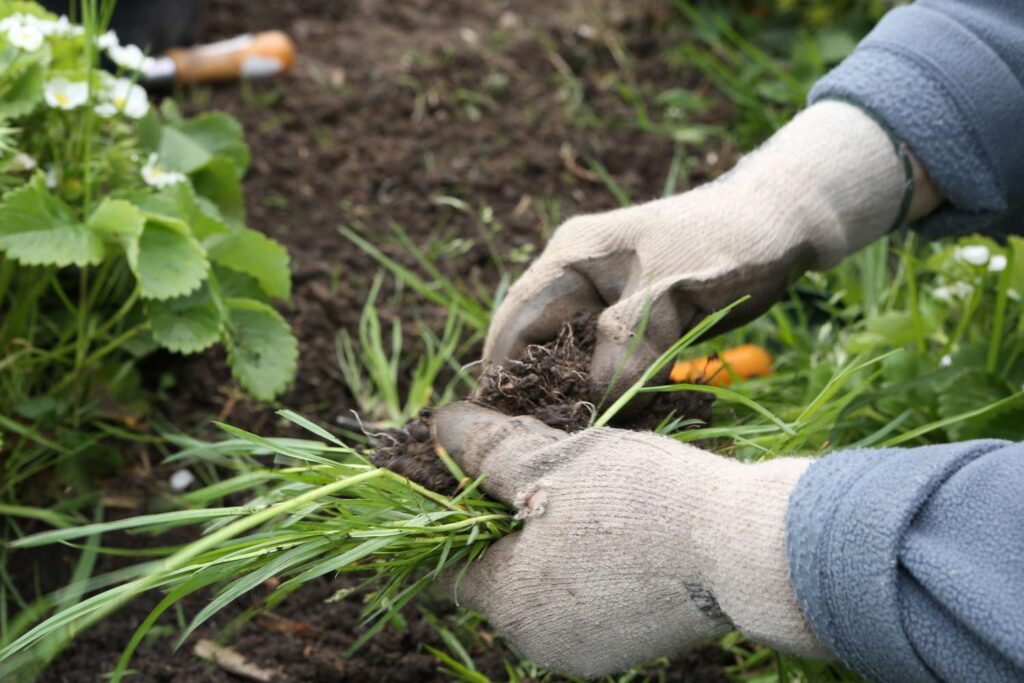Weeds are great survivors – they thrive in wet weather and it can take more than a few years of drought and water restrictions to completely knock them on the head.
The truth about weeds is that they are often laying low, waiting for rain and soil disturbance for the right time to reshoot from underground bulbs, rhizomes or corms, or to sprout from seed.
Weeds can come in all shapes and sizes, from small annuals such as petty spurge (once voted one of Victoria’s most annoying garden weeds) to large trees such as willows.
Try to identify and eliminate weeds before they become too large or begin to flower in the following months to stay on top of them. Stop weeds from seeding by removing their blossoms, mowing the lawn, or cutting them off if you can’t physically remove them.
Consider whether an unusual plant in your garden is a weed, especially if it is growing vigorously and you don’t recall planting it.
If you can’t identify it when it’s young, keep an eye on it, especially as it begins to flower. Once it blooms, you’ll either recognise it as a weed or realize it’s a desirable plant.
Prepare yourself for the task ahead with the right gardening tools. You’ll need a fork for flat weeds and a trowel for removing any weeds with deep roots, a bucket, and gloves. A screwdriver is also handy for getting weeds out from in between concrete.
Before you begin, help loosen the soil by spraying it with water (or wait to weed after it’s been raining). You don’t want the ground to be drenched; you want soft damp soil that makes pulling out the weeds nice and easy.

When is the best time to weed your garden?
Your garden will constantly require weeding. Except when there is snow and ice, it is a year-round activity.
However, because the weeds emerge in the spring and early summer, this is the perfect time to get it under control.
Between March and June, weed your garden thoroughly. You’ll need to weed less after that.
The four basic ways of weeding your garden
There is no one-size-fits-all approach to weeding your garden. There are four main methods, and depending on the situation:
- Hand-dig weeds out completely, including the roots. It can regrow if even a sliver of root is left behind.
- Weeds should be covered with a thick layer of mulch or black plastic. This deprives them of light, preventing them from photosynthesising and finally killing them.
- Weedkillers can be used as a spray or a topical treatment like a gel.
- Weeds must be hoed.
If you need some ideas about what to read next, here they are:
- The Essential Weeding Guide
- Some Weeding mistakes that make Gardening a real tough job
- A no-nonsense Lawn Mowing Cheat-Sheet
Weeding without chemicals
The four methods for weeding are described above. Three of them entail chemical-free weeding. Stick to a combination of hand weeding, hoeing, and a light-blocking mulch if you don’t want to use chemicals in your garden.
There are recipes for killing weeds with salt, vinegar, or boiling water on the internet. They’re all contact herbicides, meaning they kill the leaves they come into contact with.
The roots are not killed. However, they kill any other leaves they come into contact with, making them difficult to utilize in a congested border.
The roots will die off if you reapply frequently enough. Isn’t it, however, easier to hand-weed them out in the first place?
